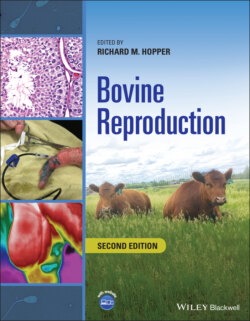Читать книгу Bovine Reproduction - Группа авторов - Страница 113
Bull‐Side Semen Evaluation
ОглавлениеAll standards recommend the collection of semen as part of the routine BBSE. However, not all standards explicitly state semen evaluation as a compulsory element of the examination. The ACV standards provide for the option of no semen evaluation, but mandate the compulsory reporting on their certificates of whether semen assessment is included in the evaluation.
For most regions, there was the option for assessment of gross motility (mass activity), apparently based on tradition. But in regions where standards were accompanied by a manual, practitioners were cautioned against using this parameter as part of the BBSE. Notably, the SFT no longer recommends the use of gross motility as part of the semen assessment process and has now removed it from the BBSE form.
All regions recommend assessing individual motility as a compulsory aspect of the BBSE. In regions where manuals are available there is clear recognition that individual motility is readily affected by artifact. To counteract this, detailed procedural guidelines are provided including the requirement for clean, warmed contact surfaces, the use of a binocular microscope, and the recommendation to dilute the semen to ensure the activity of individual cells can be readily assessed. Two of the four regions recommending semen dilution prior to motility assessment provide explicit guidelines for this dilution process, where semen is recommended to be diluted to turbid consistency (between 60 and 200 million/ml) with warmed phosphate buffered saline to ensure repeatable estimates [16, 23]. In the Netherlands, the recommendation is for a 1 : 80 dilution of semen to diluent, providing sperm concentrations of less than 20 × 106 for assessment.
Variation exists in the interpretation of the individual motility assessment. The South African system has the toughest standard, requiring individual motility to be greater than 70%. The ACV, BCVA, and WCABP systems don't consider that the bull meets the requirements for this standard unless it is greater than 60% motile. But the ACV system also accepts that although semen quality may not be suitable for freezing, bulls used solely for natural mating can have commercially acceptable fertility if the motility is greater than 30%. The ACV system therefore allows a “qualified” rating for this standard for individual motility scores between 30 and 60%. The SFT lower threshold for individual motility has been 30% since the first iteration of its BBSE system in the 1970s. This figure recognizes the need to confirm there are motile spermatozoa, but also recognizes that assessments are made in varied field conditions that can adversely affect motility.
